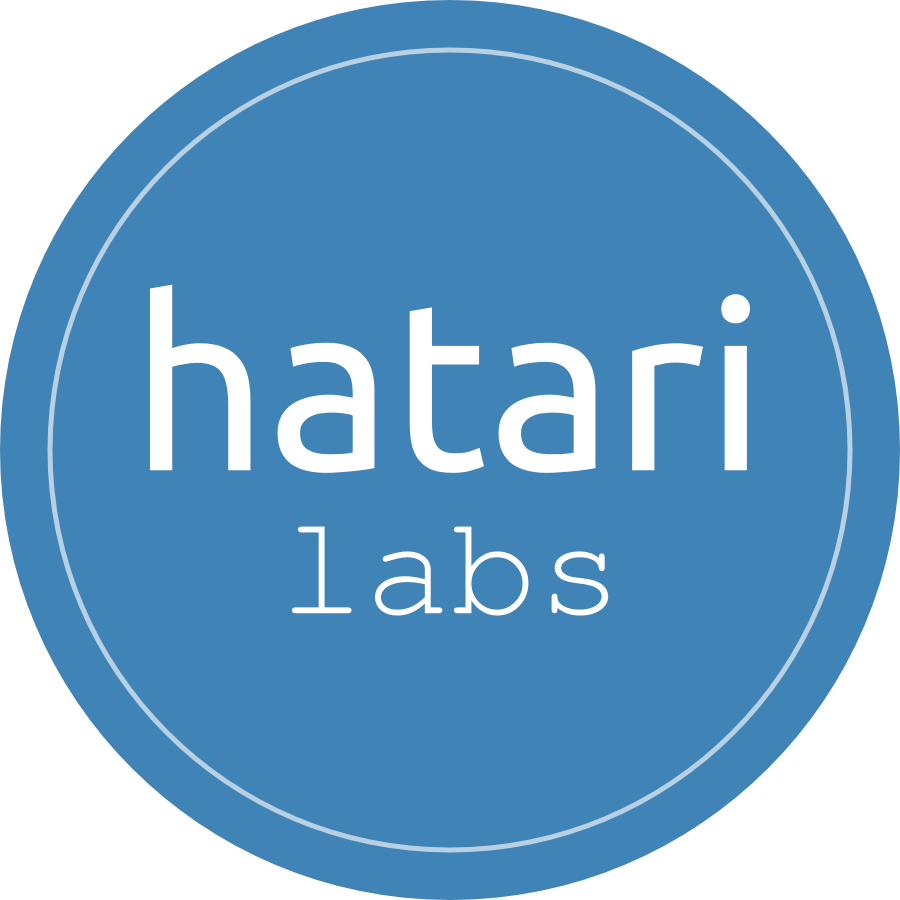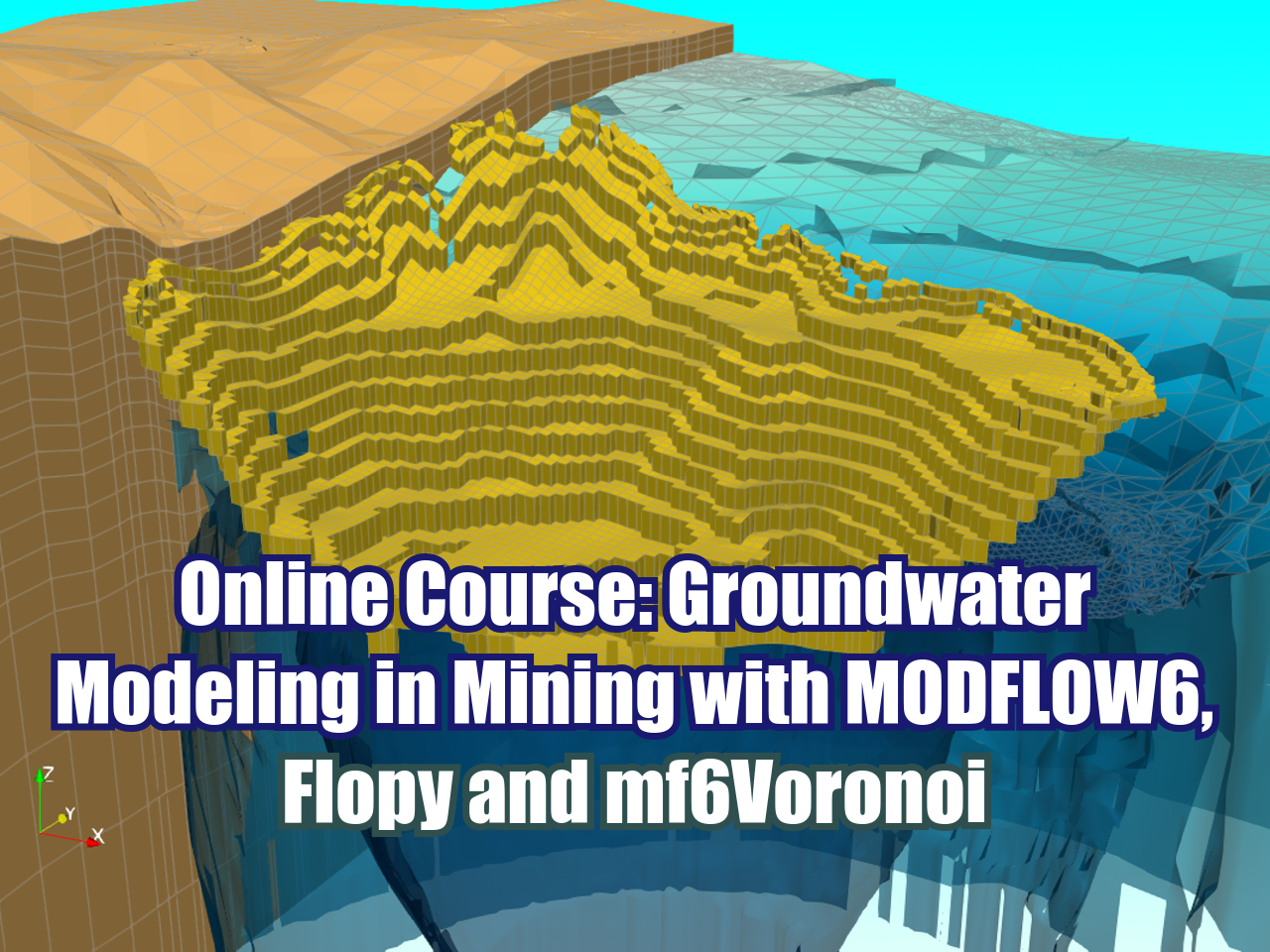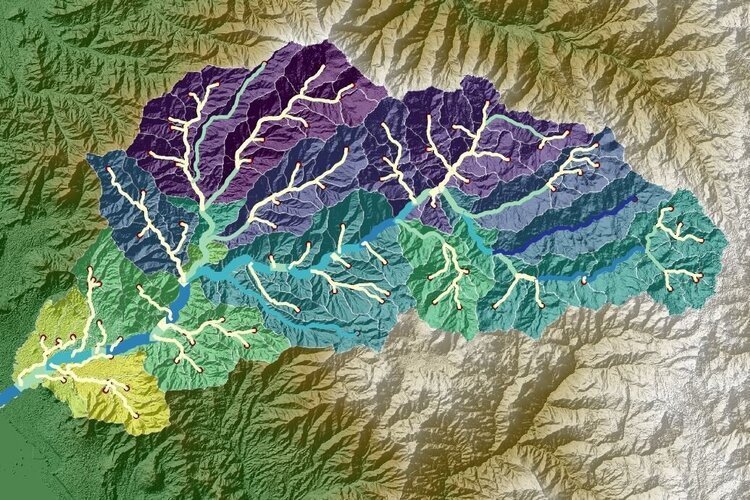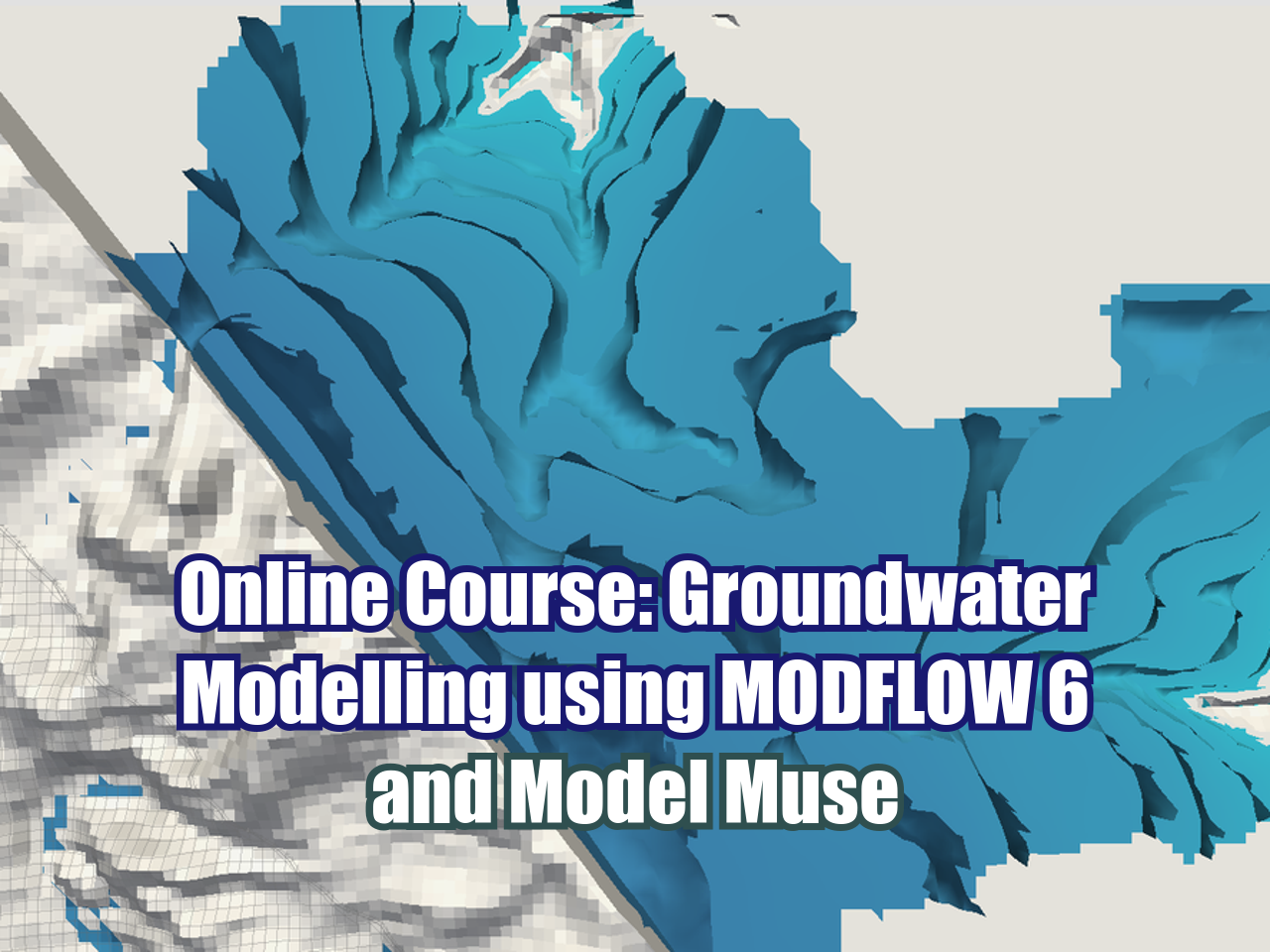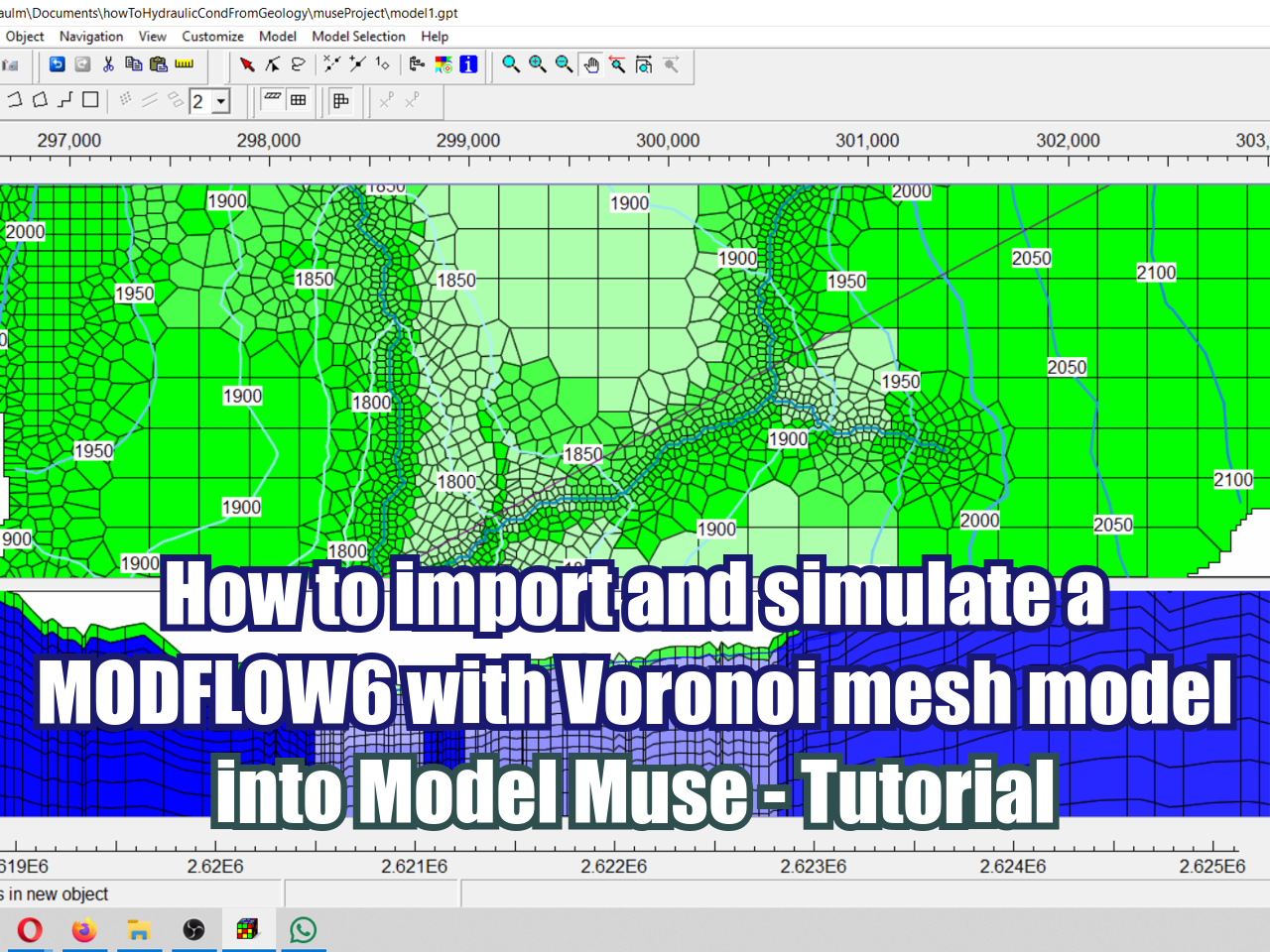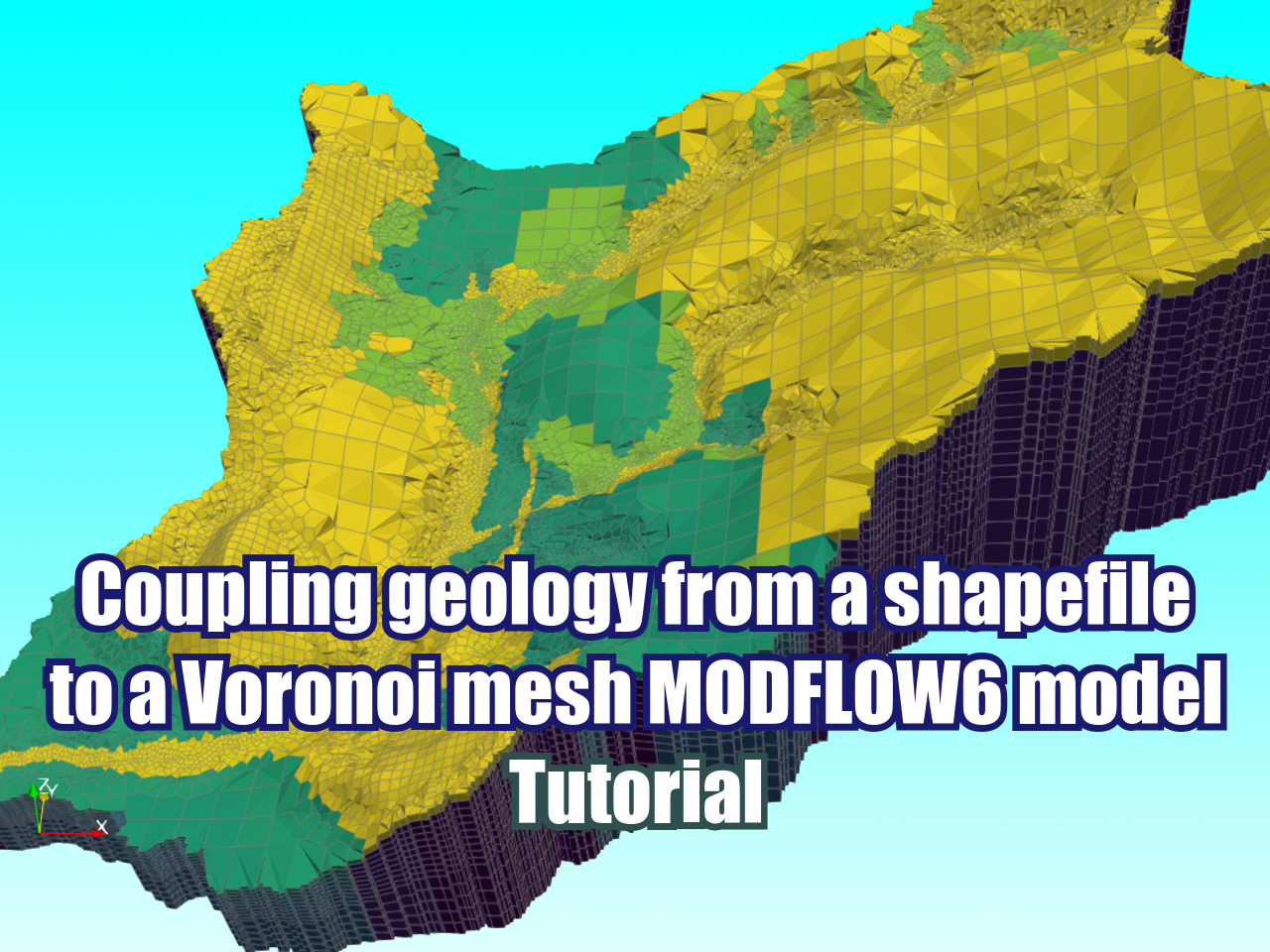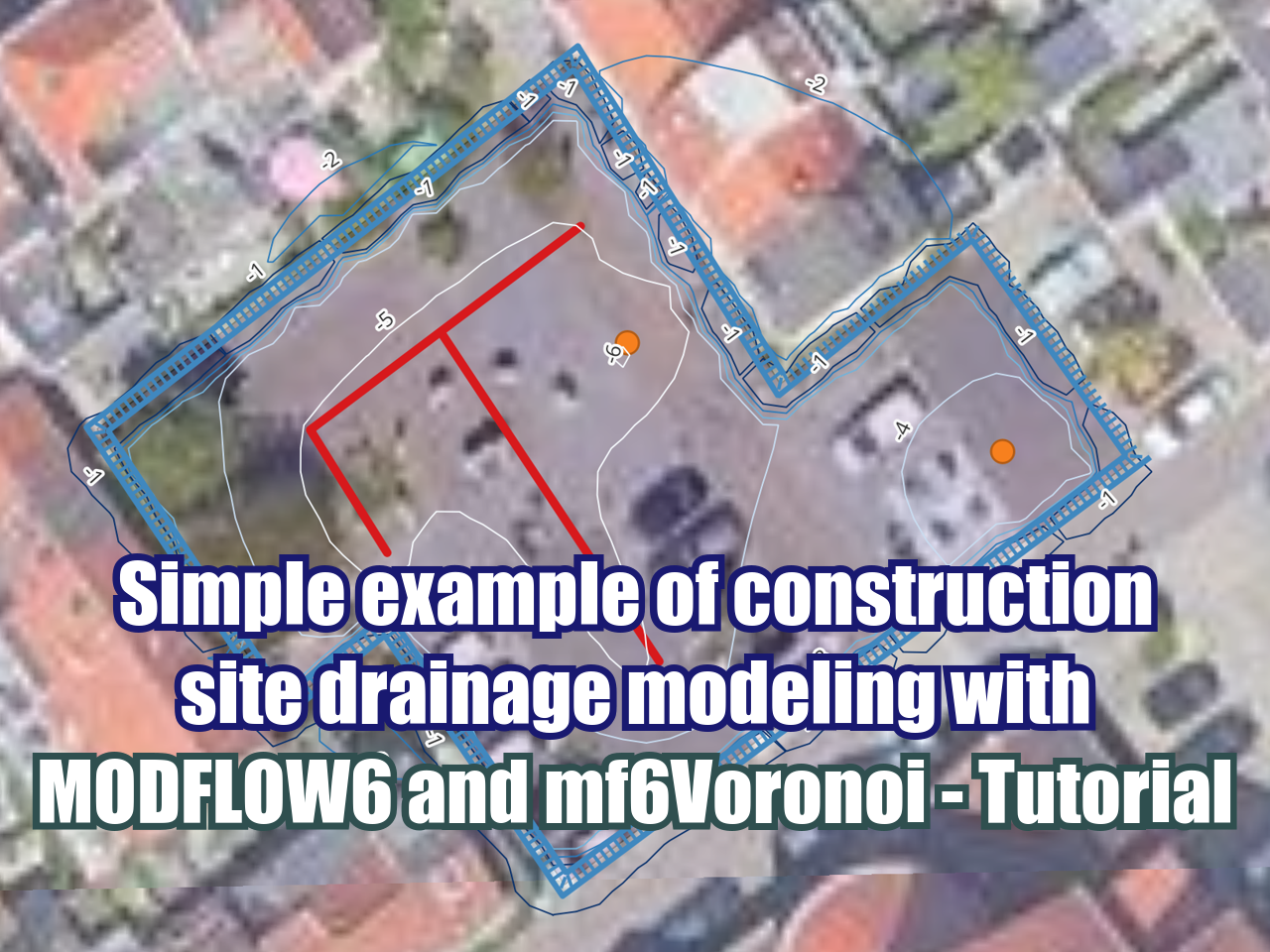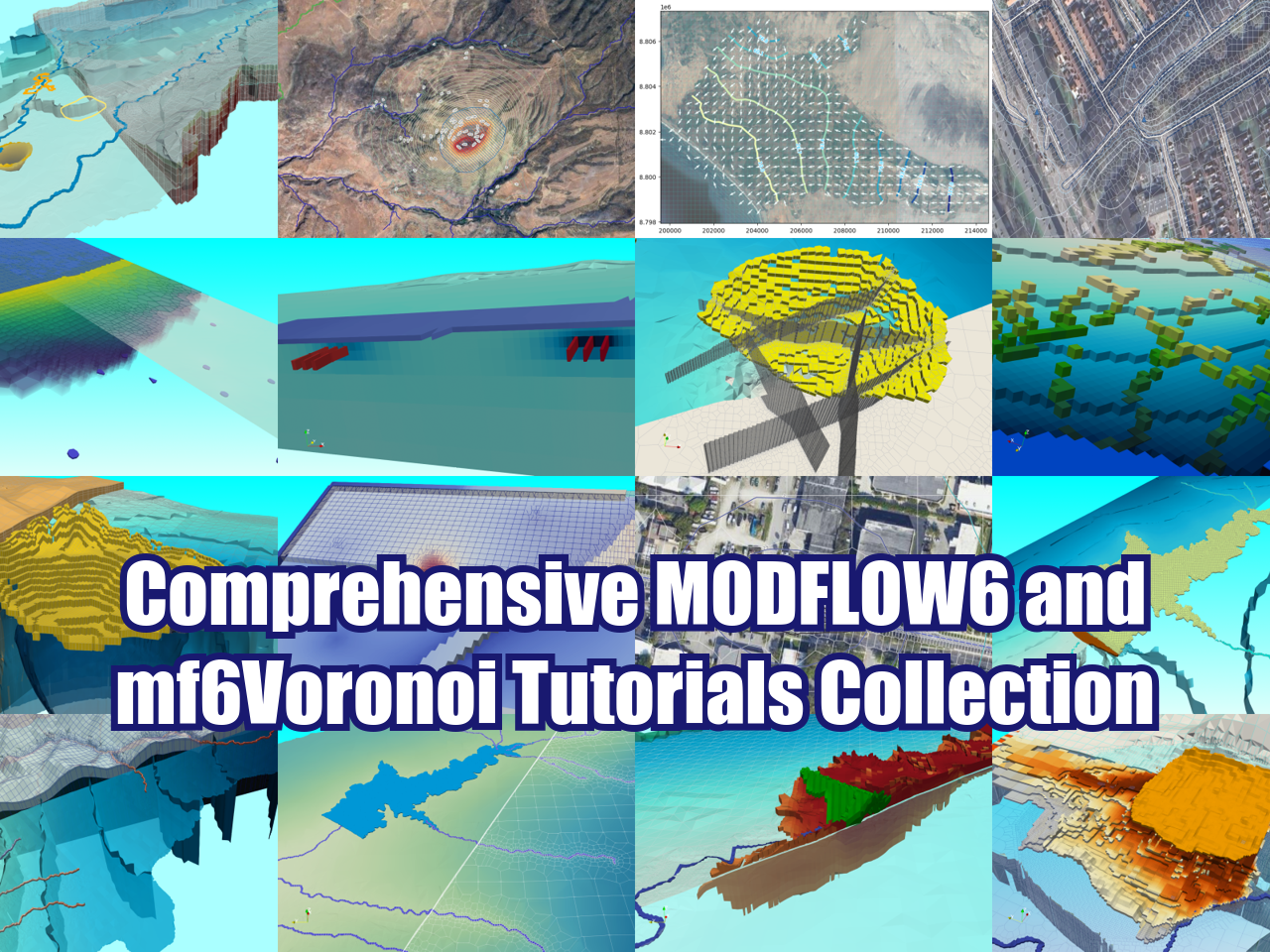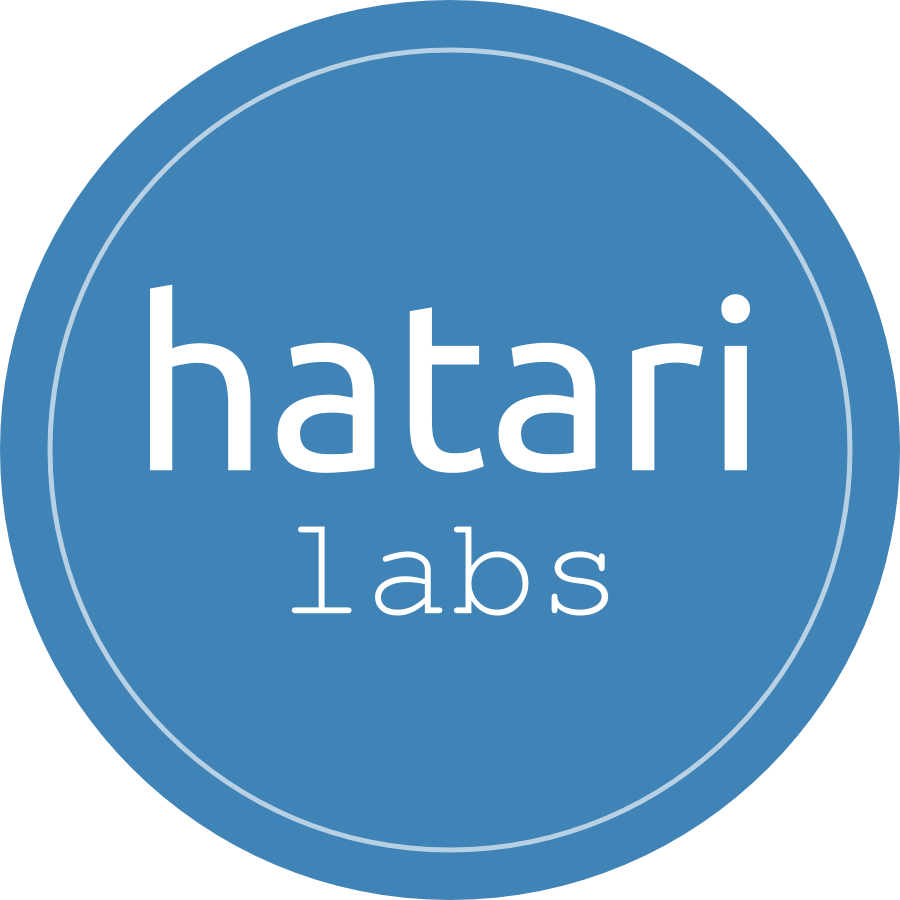Modeling groundwater inflows to pit and underground mines and assessing the impact of mining projects on the surrounding groundwater flow regime is vital for the planning and engineering of mining projects. Mine working interaction with the groundwater flow regime is a dynamic process that the user can model with MODFLOW6 together with Flopy and mf6Voronoi. This workflow has great advantages for developing mine related groundwater models since it allows fine discretizations, is fully coupled with geospatial data, comes with precoded templates and generates awesome 3d visualizations.
This course covers the use of MODFLOW6 with Flopy and mf6Voronoi for numerical modeling of the groundwater flow impact from pit development, underground mines and seepage from water dumps and tailings storage facilities.
Note: This course is for professionals with previous knowledge of Python. Basic concepts of Python programming will not be covered in the lessons and course material. In case you don’t have any knowledge of Python, we recommend you to take this online course.
Content
The course is divided into 6 sessions. These are topics considered for each session:
Session 1: Modeling underground mine inflows with MODFLOW6
This session covers an applied numerical simulation of underground mine entrances covering transient model construction, simulation and water balance analysis. Several common steps in groundwater modeling are covered as:
Generate mesh from spatial data
Model setup under transient flow regime
Setting hydraulic parameters and defining boundary conditions
Running simulations, and exporting data
3d visualizations in Paraview and water balance analysis
Session 2: Seepage flow modeling from mine dump with MODFLOW6 GWT
This session covers the simulation of groundwater in the area of two mining dumps in an Andean basin and visualization of the formation of the contaminant plume. Here we will cover:
Generate mesh from spatial data
Define the aquifer and boundary conditions (Recharge, Evapotranspiration, Drains and General head)
Import raster data for defining the regional flow
Set up a transport model under a MODFLOW6 simulation with observation points
3D visualization of the contaminant plume
Session 3: Construction of a tailings dam groundwater model - Part I, flow simulation
This session shows the insertion procedure of the boundary conditions and main properties in a tailing dam groundwater flow model on steady-state conditions over a 19 layer model.
The session includes:
Generate mesh from spatial data
Import layer elevation from geospatial rasters
Define multiple aquifers, confinement types, and hydraulic parameters
Define tailings as boundary conditions and hydraulic parameters from spatial/raster data.
Run groundwater flow, analyze water budgets and plot 3d visualizations
Session 4: Construction of a tailings dam groundwater model - Part II, transport simulation
Based on the flow model built on the previous session we will construct a transport model for the simulation of seepage from the tailings and explore the concentration distribution of pollutants.
The session covers:
Import a groundwater flow model
Defining boundary conditions for transport models such as recharge, initial conditions and constant concentrations.
Set up the parameters for advection, diffusion and output control.
Define piezometers as observation points
3d visualization of the contaminant plume and analysis of concentration trends
Session 5: Construction of the drainage groundwater flow model for an open pit - Part I, model construction
This session covers an applied case of determination of a depression cone from an open pit model built with MODFLOW6, Flopy and mf6Voronoi. The model has 18 layers and is built on transient flow conditions and is coupled with a geological model for the intrusion body. The session covers the following steps:
Generate mesh from spatial data
Define boundary conditions (RCH, EVT and GHB)
Import geology model on voxels
Define pit elevation as drains on different mine stages
Run model and explore water budgets
Session 6: Construction of the drainage groundwater flow model for an open pit - Part II, 3d visualization
This session focuses on the visualization of the impact from open pit development on the groundwater flow system with Paraview exploring all the tools available from the software to create isosurfaces, plot cross sections, and export screenshots. This session will cover:
Export model geometry and outputs as 3d files (Vtks)
Introduction to Paraview
Representation of model parameters and boundary conditions
Plot of open pit and water table for a give mine stage
Generation of water head isosurfaces
Final Exam
Trainer
Saul Montoya M.Sc.
Hydrogeologist - Numerical Modeler
Mr. Montoya is a Civil Engineer graduated from the Catholic University in Lima with postgraduate studies in Management and Engineering of Water Resources (WAREM Program) from Stuttgart University – Germany with mention in Groundwater Engineering and Hydroinformatics. Mr Montoya has a strong analytical capacity for the interpretation, conceptualization and modeling of the surface and underground water cycle and their interaction.
He is in charge of numerical modeling for contaminant transport and remediation systems of contaminated sites. Inside his hydrological and hydrogeological investigations Mr. Montoya has developed a holistic comprehension of the water cycle, understanding and quantifying the main hydrological dynamic process of precipitation, runoff, evaporation and recharge to the groundwater system.
Over the last 9 years Saul has developed 2 websites for knowledge sharing in water resources: www.gidahatari.com (Spanish) and www.hatarilabs.com (English) that have become relevant due to its applied tutorials on groundwater modeling, spatial analysis and computational fluid mechanics.
Methodology
Some details of the course methodology:
Manuals, input files and exercises will be delivered.
The teaching part is developed by videos in our elearning platform.
Online support for questions regarding the course content.
Practical lessons videos will be available forever.
To achieve a digital certificate you must submit the final exam after 1 month.
Digital certificate available at approval of the final exam.
Date and time
November 2025 (Amsterdam Time)
Tuesday 4 from 6:00 pm to 8:00 pm.
Thursday 6 from 6:00 pm to 8:00 pm.
Tuesday 11 from 6:00 pm to 8:00 pm.
Thursday 13 from 6:00 pm to 8:00 pm.
Tuesday 18 from 6:00 pm to 8:00 pm.
Thursday 20 from 6:00 pm to 8:00 pm.
Cost and payment method
Price: $250 ($180 before 10 October 2025)
This online course will be given on out elearning platform: elearning.hatarilabs.com . You will need to create an account first and then make your payment.
I you want to pay with a payment form, please request it to saulmontoya@hatarilabs.com
